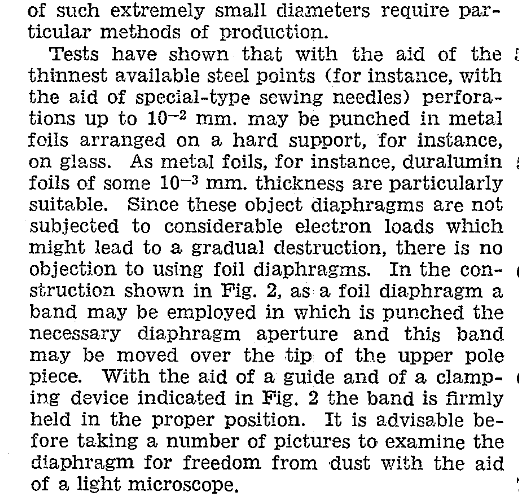This is a trick to form micron holes. You might need such a hole for, say, a spatial filter, or as the aperture for an electron gun. One might suggest doing this photolithographically, or via some electrochemistry; but there is an even simpler method described in a 1939 patent, US 2243403, by Manfred von Ardenne.

I believe the key feature is that because of the hard and inflexible glass substrate, the dimensions of the pinhole are easily made smaller than the pin used to form it. Only the very tip of the radius of the pin, the small portion which is in sufficient contact with the glass to smush the remaining foil out of the way, can define the size of the hole.
I had great success using this technique with copper EMI shielding foil from DigiKey. I first soldered the foil to a brass ring which would later become a component in the electron gun. Then, pressing the foil firmly against a microscope slide, pushed a standard pin onto it.
A friend of mine has some results with larger holes in plastic.
Lucier, Anne-Sophie. n.d. “Preparation and Characterization of Tungsten Tips Suitable for Molecular Electronics Studies.”
This is an absolutely fantastic description of a process. It has specifics (current drops from x to x during the process), pitfalls, has good diagrams, etc.
Etching points onto various other metals are described in this excellent review: